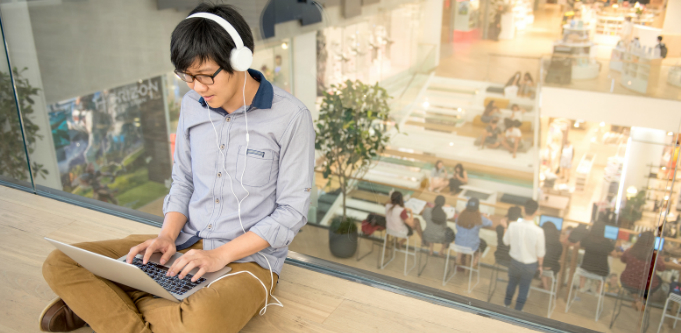
The workplace of the future will be a very different one to what we know today thanks to the rise in technology and automation, rapid globalisation, a desire for flexible work conditions and generational shifts.
Shorter working weeks, greater leave entitlements and wellness options to keep staff happy and healthy are just some of the ways businesses are creating flexible workplaces for their employees.
Here we look at five different work trends from all over the globe.
Denmark: Work-life balance capital of the world
Employees in Denmark consistently rate among those with the highest work-life balance satisfaction. This is due to a number of factors, most notably that Denmark has a lower-than-average working week of about 30 hours – the lowest weekly hours worked for any developed country.
In addition, Danes receive an average paid holiday allowance of five weeks per year. Wages are generally higher and, according to some local business owners, there is a real sense of teamwork and collaboration within firms which contribute to lower stress levels and higher productivity.
They are less concerned about slaving away for hours to impress a boss and hold a job in tough economic times because they operate within a ‘flexicurity’ culture.
Laws in Denmark make it easy to hire and fire staff but, conversely, unemployment benefits are high and the government invests significant funds into training and development programs to get people back to work.
Sweden: A six-hour day experiment
Many nations in the world are increasing the number of hours employees are expected to work – consider Turkey, Korea and Mexico. But a recent two-year experiment in Sweden proved employees are happier, more content and far more productive with a six-hour day than the full eight.
A select number of employers, mainly in the aged care industry, allowed their staff to work six hours and be paid their full salary. The results were impressive. They took less sick leave, were happier, more energised and also more productive, with nurses in one aged care facility organising 85% more activities for patients than before.
The kink in the experiment was the additional cost needed to cover extra staff needed on those two hours per day.
Australia: The epicentre of workplace wellness
Sick leave costs Australian businesses $33 billion each year and more than 88 million days off each year, so it’s in business’s interests to keep their employees healthy and motivated.
Many firms globally have spent hundreds of thousands on expensive in-house gyms and wellness centres, but Australian small business has been a leader in introducing lower-cost health programs that achieve the same result – fitter, more energised staff less likely to take ‘doona days’.
Exercise classes, group activities, such as on-site yoga and fitness classes, lunchtime group walks and team participation in fitness events are cost-effective for smaller operations including Deliveroo, Cohen Handler and Jennifer Kate but the rewards outweigh the price.
Small businesses such as The Wellbeing Challenge and Sneakers and many more have sprung up to meet the needs of small business to encourage staff to take time out of their work day to move, stretch or sweat.
Japan: Helping older workers
As the world’s population grows older, workplaces around the world are often multi-generational.
Sadly, older workers face greater challenges to remain employed and to be re-employed if made redundant, thanks to the rise in automation and availability of digital-native Millennials who often adapt to shifts in technology more easily .
According to official statistics, Japan has the oldest population in the world with 25.9% of the total country aged 65-plus as of September 2014.
Japan has created a solution to older unemployment with its Silver Human Resource Centres which help jobseekers over 60 to find paid work by acting as a jobs broker of sorts. The centres, of which there are more than 1400 across the country, also allow them to stay active within their community by caring for more elderly residents, gardening and other community projects.
Many nations are following suit with government initiatives such as JobActive in Australia which provides financial incentives for companies to employ older people and leverage their skills and industry experience to train younger and cheaper staff.
US: Kings of co-working collaboration
The rise of shareable office space has boomed in line with the rise in outsourcing and the so-called ‘gig economy’, where solopreneurs gleaning a living from local and online freelance job networks set up a base in a co-working hub.
There were approximately 11,000 co-working spaces globally in 2016 and that number is predicted to jump to 26,000 in 2020 with 3.8 million users. The US leads the world with the majority of co-working spaces per country.
But co-working isn’t just for sole traders and mumpreneurs looking for a break from their home office. SMEs and large firms alike are increasingly sending teams offsite to work within a shared hub, especially when they are working on a specific project.
The objective is to avoid the regular distractions of the office and to soak up the collaborative atmosphere, to become inspired by others and think outside the box.
A survey by employee software firm OfficeBlog revealed 70% of active participants felt healthier working in a shared space, 64% were better able to complete tasks on time and 91% had better interactions with others after their co-working sojourn.

AGL is dedicated to supporting Australian small businesses. We have a number of packages that can be tailored to your business’ specific needs. Visit us at agl.com.au/business to find out more.


COMMENTS
Reader comments have been turned off on this post.